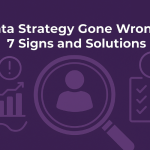- What is a cold email?
- What is a spam email?
- Differences between cold emails and spam emails
- Why do cold emails go to the spam folder?
- Begin with compliance
- Is cold texting legal?
- Tips for improving cold email success and avoiding spam issues
- Extra tips to ensure your emails stay out of spam
- Improving the approach to cold email outreach
- Get accurate email lists with DataGenie
- FAQs on cold email & spam emails
What makes a cold email effective, while another ends up marked as spam? Email outreach remains one of the most powerful tools for lead generation and outreach, even as new communication methods emerge. From startups to large corporations, businesses continue to rely on cold email outreach strategies to initiate relationships, reach new audiences, and nurture valuable leads. Yet, there’s a fine line between a well-crafted cold email that can open doors to valuable connections and spam that not only fails to engage but also damages a brand’s credibility and reputation.
Recognizing the difference between cold email and spam of email outreach is essential for anyone aiming to build trust, create positive impressions, and foster genuine engagement with potential clients. A successful cold email can resonate with recipients and demonstrate respect for their time and interests, while spam is often seen as intrusive and irrelevant. In this blog, we’ll explore eight key ways to distinguish a professional cold email from spam, helping you refine your approach, protect your sender reputation, and achieve meaningful results in your outreach efforts.
Learn how to verify email addresses effectively to ensure better email deliverability and avoid being flagged as spam.
What is a cold email?
A cold email is an unsolicited message sent to a recipient without prior communication. This approach’s main purpose is to initiate discussions, build connections, and uncover possibilities for collaboration or business deals. It often involves cold email personalization techniques, cold email templates for sales, and cold email subject line tips to enhance engagement.
Effective cold email outreach strategies often involve using tools like email permutator tools to generate accurate contact information.
What is a spam email?
Spam emails are bulk messages sent without consent and often without relevance to the recipient. Common examples include marketing emails that recipients never opted into, phishing scams, and indiscriminate mass sales pitches. This impersonal strategy can trigger spam filters, harm the sender’s reputation, and reduce email delivery rates. Unlike cold email outreach strategies, intentional sales efforts focus on understanding prospects, addressing their pain points, reaching appropriate contacts, and crafting specific, meaningful messages.
Following email authenticity validation guidelines is crucial to avoid being flagged as spam.
Differences between cold emails and spam emails
- Purpose: Cold emails are designed to reach out with a clear intention, fostering meaningful interaction. Spam, however, lacks targeted intent and often contains irrelevant content.
- Personalization: A hallmark of cold emails is their tailored approach, crafted to reflect the recipient’s needs or interests. Spam usually involves generic messages with little regard for personalization.
- Clarity: Cold emails are direct, explaining the reason for the outreach and what is offered. Spam tends to be vague, promotional, and disconnected from what the recipient values.
- Sender reputation: Cold email deliverability tips help maintain trustworthiness. Spam may be sent from sources with dubious reputations, sometimes even carrying harmful intent.
- Opt-out option: Responsible cold email practices include an option for recipients to unsubscribe or opt-out, ensuring compliance with legal standards. Spam, in contrast, often disregards such practices, further damaging trust.
- Content relevance: Cold emails aim to provide relevant information and value to the recipient, while spam generally involves irrelevant or generic content.
Why do cold emails go to the spam folder?
Understanding why cold emails end up in spam can help improving cold email deliverability. The two main reasons this happens are:
- Spam filters triggered by email service providers (ESPs): ESPs have built-in filters to detect unsolicited messages and divert them away from the main inbox. This helps recipients avoid excessive promotional content.
- Recipient action: If recipients mark the email as spam, it signals to the ESP that the content may be unwanted or irrelevant.
Some of the common factors contributing to cold emails landing in the spam folder include:
- Content or subject lines that contain trigger words associated with spam
- Inaccurate sender details
- Lack of recipient consent for receiving emails
- Incomplete email authentication
- Missing unsubscribes options
- Being marked as spam by recipients
Refer to 100 winning email subject lines for B2B sales to craft effective and engaging subject lines.
Begin with compliance
Establishing lawful cold email outreach strategies requires a thorough understanding of regulations governing cold emailing across different regions. Each country enforces unique rules to ensure that email communication respects privacy rights and avoids intrusive practices.
Here’s an overview of cold email laws in some regions:
- United States (CAN-SPAM Act)
Consent is not mandatory for sending cold emails. However, the law mandates clear sender identification, truthful subject lines, and the inclusion of an opt-out mechanism. Violations can lead to significant penalties. - United Kingdom (PECR)
For business-to-business (B2B) communication, consent is not necessary if the content is relevant to the recipient’s role. Strict rules apply to personal communications, requiring explicit permission before outreach. - Germany (UWG)
Explicit permission is required for all cold email outreach, whether the recipient is an individual or a business. Non-compliance may result in severe consequences, making it important to meet all legal requirements.
For an in-depth analysis of legal compliance, you can check is cold email legal? Consulting legal professionals with expertise in these laws can help address specific concerns and create a framework for responsible email practices.
Complying with these rules ensures your cold email campaigns are respectful and legally sound. For regions with stricter requirements, working with cold email consulting services or cold email training programs can help.
Utilize Contact database platforms provided by the best email list providers to ensure compliance with global standards.
Is cold texting legal?
The question of whether cold texting is legal has a simple answer: no, it isn’t entirely unrestricted. Text messaging is a much more personal form of communication than email, and many recipients find unsolicited texts more intrusive. In the United States, the legality of cold texting falls under strict regulations, with the Telephone Consumer Protection Act (TCPA) at the forefront. This law mandates that businesses must obtain clear, written consent before sending any promotional text messages, setting a high bar for compliance.
Key compliance guidelines for cold texting
- Obtain explicit consent before sending messages
Cold texting requires prior written consent from the recipient. For instance, under the TCPA, a business cannot send promotional messages unless the recipient has actively opted in, perhaps through a form or checkbox on a website that clearly states they agree to receive such communications. Sending messages without this consent can result in significant fines per violation, underscoring the importance of a transparent opt-in process. - Avoid deceptive practices
Texts must be transparent in their purpose and content. Federal agencies like the Federal Communications Commission (FCC) and the Federal Trade Commission (FTC) regulate against misleading or deceptive messages, ensuring that recipients know who the sender is and what the message entails. This includes avoiding vague or clickbait-style wording, which could lead to a negative impression or even regulatory penalties. - Respect carrier-specific guidelines
Each mobile carrier may have specific rules for SMS communications, often requiring businesses to avoid prohibited content, such as hate speech, threats, or inappropriate language. Carriers can block messages that don’t comply, so businesses need to consider both federal regulations and individual carrier requirements to ensure their messages reach recipients without issues. - Offer an opt-out option
Similar to email regulations, cold texting should provide recipients with a clear way to opt out of future messages. Adding a simple line like “Reply STOP to unsubscribe” ensures that recipients have control over their message preferences and helps businesses maintain a positive sender reputation. - Refer to official resources for updates
Staying informed is essential for compliance. For additional guidance, the FCC and FTC websites provide detailed regulations on SMS marketing, helping businesses keep pace with any changes in the legal landscape for text-based outreach.
Following these guidelines helps companies conduct compliant, respectful cold texting campaigns that align with federal standards while respecting recipients’ preferences.
Tips for improving cold email success and avoiding spam issues
1. Targeted communication vs. Mass messaging
- Cold Outreach: Effective cold outreach focuses on creating tailored content that highlights the recipient’s unique role or business context. This personalized effort signals that significant research has been conducted, fostering genuine interest and making the communication feel authentic. Personalized greetings and addressing specific industry challenges contribute to meaningful engagement.
- Spam: Characterized by impersonal bulk messages, spam fails to address the recipient in a thoughtful way. Generic phrases like “Dear Customer” reveal a lack of effort in understanding the audience. These messages are often sent en masse and are rarely relevant to the recipient’s specific needs, leading to them being flagged as unwanted.
2. Relevance and Intent vs. Random Distribution
- Cold Outreach: Well-crafted cold emails are intended to align with the recipient’s current needs or challenges. Each email is composed with the specific recipient in mind, providing value that connects with their interests or industry. This strategic approach strengthens the chance of a positive response and avoids the spam folder.
- Spam: Randomly sent to large lists without careful targeting, spam messages often lack a relevant message or objective. These emails do not reflect any real understanding of the recipient’s business or personal circumstances, making them unappealing and increasing their likelihood of being ignored or flagged as spam.
3. Transparency and Sender Identity vs. Ambiguity
- Cold Outreach: Establishes trust by clearly displaying who the sender is and why they are reaching out. The inclusion of full sender details, including a recognizable name and professional email domain, reassures recipients of the message’s authenticity. Transparency in communication is crucial for building trust and ensuring emails are welcomed.
- Spam: Often hides or disguises the sender’s identity to avoid detection. Ambiguous email addresses and misleading sender information create uncertainty and skepticism among recipients, making them more inclined to mark the email as spam or delete it immediately.
4. Opt-out Mechanisms vs. Hard-to-Find Links
- Cold Outreach: Ensures compliance with legal requirements by including an easily accessible unsubscribe link. This practice respects the recipient’s right to opt out and conveys professionalism and transparency. The clear opt-out option demonstrates consideration for the recipient’s preferences.
- Spam: Frequently fails to provide an unsubscribe mechanism or buries it within the email, making it difficult for recipients to find. This lack of accessibility can frustrate recipients and lead to negative responses or spam reports, reflecting poorly on the sender’s practices.
5. Building Long-term Relationships vs. Aggressive Tactics
- Cold Outreach: Aims to establish a foundation for future communication, focusing on nurturing relationships and fostering trust. The approach prioritizes genuine engagement over immediate results, with an understanding that valuable connections develop gradually over time.
- Spam: Typically emphasizes quick gains, pushing for immediate actions with little regard for the recipient’s readiness or interest. This approach can come across as pushy or intrusive, often damaging trust and reducing the likelihood of a positive response.
6. Consistent and Appropriate Timing vs. Overload
- Cold Outreach: Pays attention to the timing and frequency of emails, sending them at intervals that show respect for the recipient’s schedule. Well-timed messages are more likely to be read and considered without overwhelming the recipient’s inbox, fostering a better reception.
- Spam: Overwhelms recipients by sending frequent, often poorly timed messages that clutter inboxes. This relentless approach can cause irritation and lead to the email being marked as spam or deleted without being read.
7. Security and Email Verification vs. Suspicious Practices
- Cold Outreach: Utilizes authentication protocols such as SPF, DKIM, and DMARC to prove the legitimacy of the email and protect against unauthorized access. These measures confirm that the sender is genuine and help reinforce trust in the email’s content.
- Spam: Lacks proper authentication, often appearing dubious and questionable. Emails from unverified sources raise red flags for recipients and email service providers, leading to them being blocked or sent to the spam folder.
8. Providing real value vs. empty offers
- Cold outreach: Shares content that is genuinely helpful, informative, or aligned with the recipient’s interests. Whether offering insights, solutions, or valuable information, these messages aim to create a positive impact and demonstrate the sender’s understanding of the recipient’s needs.
- Spam: Usually features exaggerated claims or irrelevant offers that do not hold meaningful benefits. These superficial messages often come across as self-serving, failing to resonate with recipients and reducing engagement
For accurate and compliant email data, explore email marketing data services to boost campaign effectiveness.
Extra tips to ensure your emails stay out of spam
Ensuring that your cold emails reach recipients’ inboxes instead of being flagged as spam is critical for successful outreach. Here are four practical strategies to help:
- Use accurate and transparent subject lines
Craft email subject lines that clearly indicate the content of your email. Avoid spam-trigger words or deceptive language that may lead recipients to mark your email as spam. For example, instead of “Free Offer Inside,” use a professional and relevant subject like “Solutions to Optimize Your Team’s Workflow.” - Include an easy-to-find unsubscribe option
Always provide a visible and simple way for recipients to opt out of receiving future emails. This practice not only complies with regulations like CAN-SPAM and GDPR but also demonstrates respect for recipient preferences. A well-placed unsubscribe link, typically at the bottom of the email, can help maintain trust and a positive sender reputation. - Use a recognizable and consistent sender name
Recipients are more likely to open emails from familiar or trusted names. Ensure your sender name is professional, consistent, and easily identifiable. For instance, “Rachel at ABC Solutions” is more trustworthy than a generic or vague address like “info@company.com.” - Monitor and improve email engagement
Track how recipients interact with your emails. High bounce rates, frequent spam complaints, or low open rates can negatively impact your sender reputation. Regularly clean your email lists to remove unresponsive or invalid contacts. This proactive approach helps improve deliverability and ensures your emails reach engaged recipients.
By following these steps, businesses can enhance the success of their cold email campaigns while maintaining a professional and trustworthy approach.
Improving the approach to cold email outreach
Success in cold email outreach isn’t measured by the number of emails sent but by the value, relevance, and respect conveyed in each message to the intended audience. Thoughtful communication fosters trust and lays the groundwork for meaningful connections.
Before initiating your campaign, ensure you collaborate with data providers and cold email automation platforms by focusing on cold email best practices that prioritize compliance with industry and privacy regulations. Focus on resources that invest in data accuracy, advanced technologies, and insightful targeting signals to ensure your outreach is not only precise but also respects legal boundaries and recipient preferences.
Prioritizing quality over quantity in your outreach can create a positive experience for both sender and recipient, paving the way for genuine engagement.
To complement email outreach, check out the best ways to improve your cold calling for additional strategies.
Get accurate email lists with DataGenie
Building a successful cold email campaign begins with the right data. DataGenie specializes in providing high-quality, accurate, and verified email lists tailored to your business needs. Whether you’re targeting specific companies, industries, or decision-makers, DataGenie ensures you have the most reliable contact information to maximize your outreach success.
With DataGenie, you get:
- Verified email addresses of key decision-makers and professionals for cold email lead generation.
- Comprehensive contact lists segmented by industry, geography, or job title
- Data compliant with global email regulations, ensuring your campaigns meet privacy standards
Don’t let outdated or inaccurate data hold back your email campaigns. Contact DataGenie today for tailored solutions to enhance your cold email success and unlock the potential of your cold outreach with precise and actionable contact lists!
For further insights on buying email marketing leads, read everything you need to know about buying email marketing leads
FAQs on cold email & spam emails
Cold emails are targeted messages sent to recipients with a legitimate business interest, often following legal and ethical practices. Spam emails, on the other hand, are unsolicited bulk messages with irrelevant or deceptive content, violating trust and often legal regulations.
A cold email is a personalized and targeted outreach message sent to a potential prospect with whom there is no prior relationship. It is used for purposes like lead generation, sales, or networking.
Spam emails often lack personalization, include misleading subject lines, and fail to provide clear opt-out options. They are typically sent in bulk without considering the recipient’s interests.
To write an effective cold email, focus on personalization, a clear subject line, and a concise message. Address the recipient’s needs, offer value, and include a call to action.
Best practices include personalizing the email, segmenting your email list, using engaging subject lines, and ensuring compliance with legal regulations like GDPR or CAN-SPAM.
Cold emailing laws vary by region. In the US, the CAN-SPAM Act allows cold emails but requires opt-out options and accurate sender information. GDPR in Europe requires consent in most cases.
Use proper subject lines, avoid spam-triggering words, validate email addresses, and provide clear opt-out links. Monitoring email engagement and maintaining clean email lists also helps.
Personalization techniques include addressing the recipient by name, referencing their business or achievements, and tailoring the message to their specific needs or pain points.
Create concise, relevant, and engaging subject lines that reflect the email content. Avoid clickbait and use action-driven language to grab attention.
Cold emails are sent to new prospects without prior interaction, while warm emails are directed to individuals with some level of existing engagement or connection.
Effective strategies include thorough research, audience segmentation, A/B testing, and consistent follow-ups with personalized messaging.
Mistakes include sending bulk, generic emails, using misleading subject lines, neglecting legal compliance, and failing to provide an opt-out option.
Personalize your emails, address specific needs, use compelling subject lines, and include a clear call to action. Testing and analyzing metrics can also enhance response rates.
Yes, there are many cold email templates for sales available that cater to different industries and goals. Using customizable templates can save time while ensuring relevance.
Effective follow-up strategies include sending timely reminders, providing additional value, and avoiding overly frequent or pushy messages.
Build a list by researching target prospects, leveraging data providers, and using tools to ensure accurate and relevant contact information.
Key metrics include open rates, click-through rates, reply rates, bounce rates, and conversion rates. Tracking these helps refine future campaigns.
Segment lists based on factors like industry, company size, location, or job role to create more relevant and personalized outreach campaigns.
Cold email automation tools like Mailshake, Lemlist, and Woodpecker help streamline outreach, personalize emails at scale, and track campaign performance.
Compliance guidelines require clear sender identification, an opt-out option, and adherence to local laws like GDPR, CAN-SPAM, or CASL.
Cold email involves reaching out via email, while cold calling involves direct phone calls. Both have unique benefits depending on the target audience and purpose.
Sending emails during weekdays, typically in the morning or early afternoon, tends to yield higher open and response rates.
Respect the recipient’s choice, update your list accordingly, and focus on refining your message for future outreach efforts.
Services include email list building, campaign management, automation platforms, and compliance tools to ensure successful and lawful campaigns.
Measure ROI by tracking metrics like conversions, cost per lead, and overall revenue generated from the campaign compared to the investment.
Yes, professionally designed templates save time and can help craft messages aligned with industry best practices and goals.

Elizabeth Jones, Data expert at DataGenie, helps businesses turn data into clear, practical insights. She's great at simplifying complex ideas, making data useful and easy to understand. Elizabeth regularly shares tips on professional networks and actively joins discussions on X (formerly Twitter). Follow her posts on the DataGenie blog for straightforward advice on making data work better for your business.




